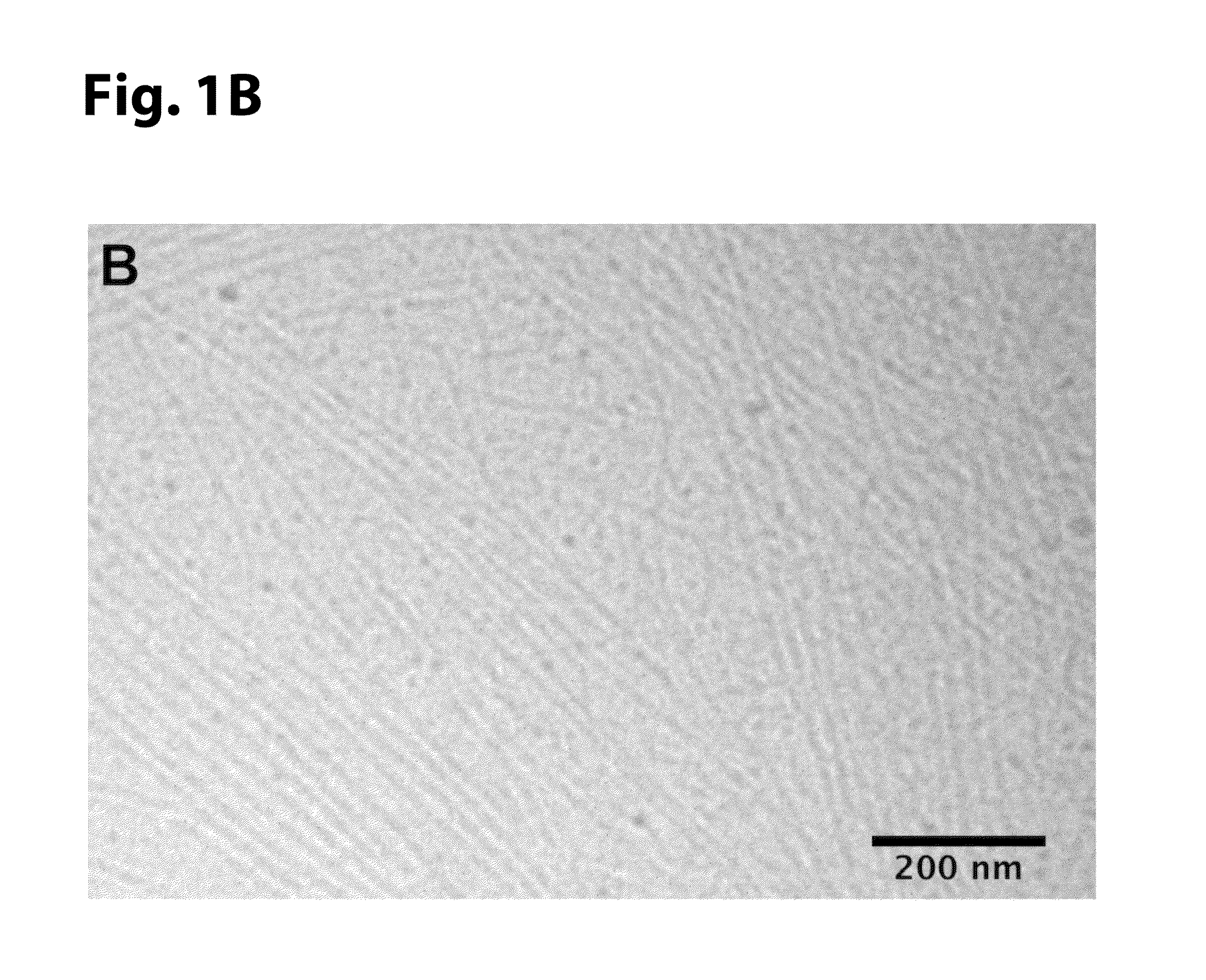Novel VEGF mimetic peptide-based scaffolds for therapeutic angiogenesis and methods for their use
a mimetic peptide and scaffold technology, applied in the direction of peptide/protein ingredients, peptide sources, angiogenin, etc., can solve the problems of limited tissue-specific targeting, protein-based therapies, and the need for new therapeutic approaches, and achieve enhanced bioactivity, enhanced limb recovery, and improved blood flow measurement
- Summary
- Abstract
- Description
- Claims
- Application Information
AI Technical Summary
Benefits of technology
Problems solved by technology
Method used
Image
Examples
example 1
Design and Synthesis of a VEGF-Mimetic PA
[0104]The VEGF-PA (FIG. 1A) utilized in the present examples was designed to display on surfaces of nanostructures a peptide sequence that mimics VEGF, namely KLTWQELYQLKYKGI-NH2 (SEQ ID NO: 2) [12]. A glycine (G) spacer was covalently attached to the N-terminus of this peptide, followed by a triple lysine (K3) sequence intended to improve solubility and trigger electrolyte-driven self-assembly. The K3G sequence was followed by a V2A2 β-domain and a C16 acyl chain to promote self-assembly into cylindrical nanostructures through intermolecular hydrogen bonding and hydrophobic collapse upon electrolyte screening of charged residues (FIG. 1G).
[0105]Stabilization of the bioactive conformation of the VEGF-mimetic peptide by conjugation to a PA could be advantageous to enhance the potency of the epitope. To demonstrate the improvement obtained a VEGF-PA and epitope-only peptide control were synthesized. In addition, as a nanostructure control for t...
example 2
Structural Characterization of a VEGF-Mimetic PA
[0108]Cryogenic TEM was performed on a JEOL 1230 microscope with an accelerating voltage of 100 kV. A Vitrobot Mark IV equipped with controlled humidity and temperature was used for plunge-freezing samples. A small volume (7 μl) of 0.05 w / v % VEGF-PA dissolved in 0.5×PBS was deposited on a copper TEM grid with Quantifoil support film (Electron Microscopy Sciences) and held in place with tweezers mounted to the Vitrobot. The specimen was blotted in 90-95% humidity and plunged into a liquid ethane reservoir cooled by liquid nitrogen. The vitrified samples were transferred into liquid nitrogen and inserted into a Gatan 626 cryo-holder through a cryo-trarisfer stage. Samples were imaged using a Hamamatsu ORCA CCD camera.
[0109]SEM was performed using a Hitachi S4800 scanning electron microscope with a 5 kV accelerating voltage. To prepare samples for imaging, VEGF-PA was dissolved at 1.5 w / v % in water and mixed with 10 mM Na2HPO4 to induce...
example 3
VEGF-PA Specifically Activates VEGF Receptors
[0113]VEGF signal transduction is initiated by multiple tyrosine phosphorylation events on the intracellular domain of its receptors [29]. In order to determine if the VEGF-PA specifically signals in a manner consistent with VEGF, human umbilical vein endothelial cells (HUVEC) were stimulated with VEGF-PA and a sandwich ELISA was performed on cell lysates to quantify the amount of phosphorylated VEGF receptor 1 (VEGFR1 or Flt-1) or phosphorylated VEGF receptor 2 (VEGFR2 or KDR), the two primary VEGF receptors implicated in its angiogenic signaling.
[0114]Human umbilical vein endothelial cells (HUVECs) and complete endothelial cell growth media (EGM) were purchased (Genlantis, San Diego, Calif.), passaged two times following receipt, and cryo-preserved in media with 5% DMSO. Cells were thawed as needed and grown to confluence in a 75 mm2 flasks (VWR Falcon) prior to plating for experiments.
[0115]Phosphorylation of both VEGFRI and VEGFR2 was...
PUM
| Property | Measurement | Unit |
|---|---|---|
| diameter | aaaaa | aaaaa |
| diameter | aaaaa | aaaaa |
| accelerating voltage | aaaaa | aaaaa |
Abstract
Description
Claims
Application Information
 Login to View More
Login to View More - R&D
- Intellectual Property
- Life Sciences
- Materials
- Tech Scout
- Unparalleled Data Quality
- Higher Quality Content
- 60% Fewer Hallucinations
Browse by: Latest US Patents, China's latest patents, Technical Efficacy Thesaurus, Application Domain, Technology Topic, Popular Technical Reports.
© 2025 PatSnap. All rights reserved.Legal|Privacy policy|Modern Slavery Act Transparency Statement|Sitemap|About US| Contact US: help@patsnap.com



